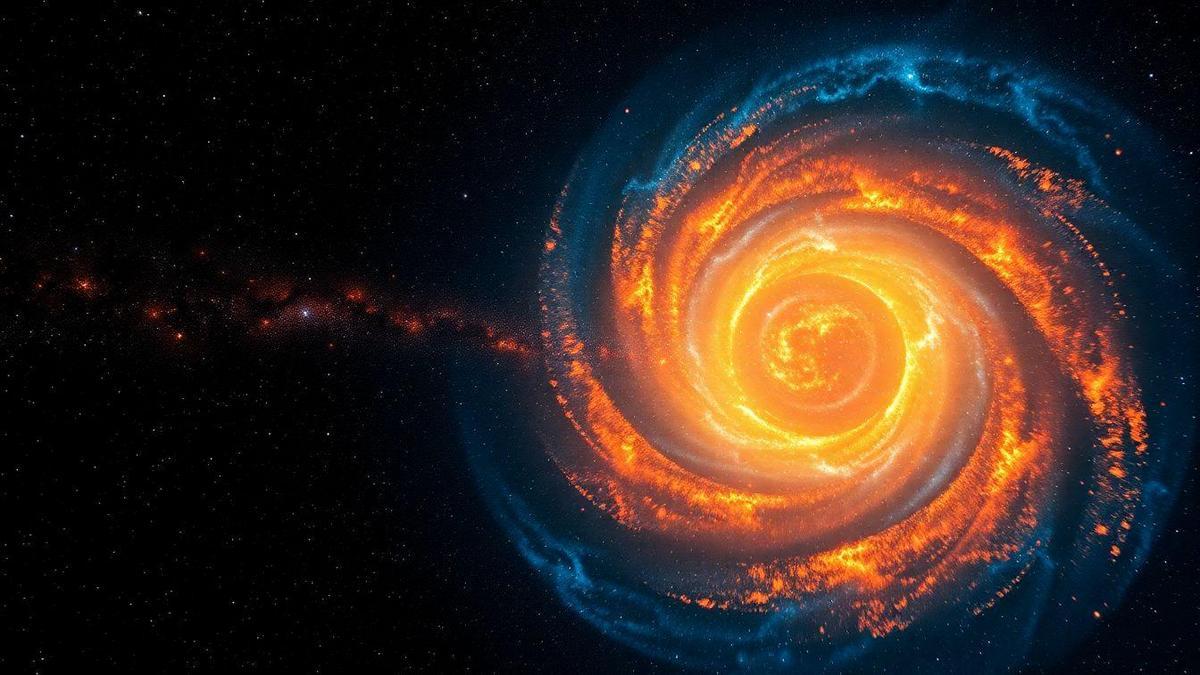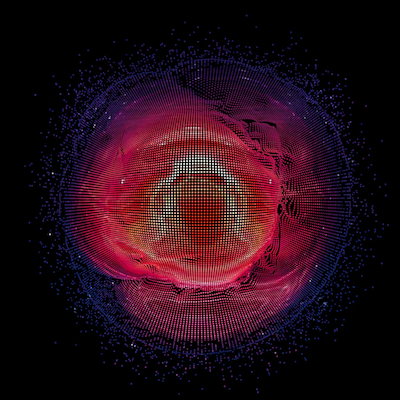
The Cosmic Microwave Background (CMB) radiation is one of the most fascinating and important phenomena in modern cosmology. It represents the leftover light from the Big Bang, which occurred approximately 13.8 billion years ago. This radiation permeates the entire universe and is one of the main pieces of evidence supporting the Big Bang theory. By studying the CMB, scientists gain valuable insights into the origin, evolution, and structure of the cosmos. The CMB is a form of electromagnetic radiation in the microwave range of the spectrum, invisible to the human eye but detectable by scientific instruments.
The study of the CMB not only helps us understand the history of the universe but also provides clues about the physical processes that shaped the formation of galaxies, stars, and planets. Since its discovery in the 1960s, the CMB has been a fertile ground for scientific investigations, leading to significant advances in our understanding of the cosmos. This article explores how the CMB works, its advantages in cosmological studies, and its influence on our understanding of the universe.
How Does the Cosmic Microwave Background Radiation Work?
The CMB is the result of thermal radiation that permeates the universe. After the Big Bang, the universe was in an extremely hot and dense state, where subatomic particles moved rapidly and interacted frequently. As the universe expanded, it began to cool, allowing electrons and protons to combine to form hydrogen atoms. This process, known as recombination, occurred approximately 380,000 years after the Big Bang. At that moment, radiation that was previously scattered and interacting with charged particles began to travel freely through space. This radiation is what we call the Cosmic Microwave Background.
One of the most notable features of the CMB is its uniformity. When scientists analyze the CMB, they observe that the radiation is nearly the same in all directions of the sky, suggesting that the universe is homogeneous on large scales. However, small temperature fluctuations in the CMB, known as anisotropies, provide clues about the matter distribution in the early universe. These anisotropies are crucial for understanding the formation of structures like galaxies and galaxy clusters, helping cosmologists test different models of universe evolution.
To detect and study the CMB, scientists use specialized telescopes such as the Wilkinson Microwave Anisotropy Probe (WMAP) and the Planck satellite. These instruments are designed to measure the temperature and polarization of the CMB with high precision. Analyzing the data collected by these telescopes allows cosmologists to infer the universe’s age, its composition, and its expansion rate, known as the Hubble constant.
In addition to providing information about the universe’s history, the CMB also serves as a window into fundamental physics. Through studying the CMB, scientists can investigate fundamental questions about the nature of dark matter and dark energy, which comprise most of the universe but are still poorly understood. Thus, the CMB is not just a relic of the past but a valuable resource for exploring the mysteries of the cosmos.

Advantages of Studying the Cosmic Microwave Background Radiation
Studying the CMB offers significant advantages for cosmology and astrophysics. First, it provides a unique view of the universe’s initial state. As the radiation dates back to a period very close to the Big Bang, it carries information about the conditions that prevailed at that time. This allows scientists to test theories about the universe’s formation and the evolution of cosmic structures.
Second, the CMB is a powerful tool for measuring the geometry of the universe. By analyzing anisotropies in the CMB, cosmologists can determine whether the universe is flat, open, or closed. These measurements have profound implications for understanding the universe’s dynamics and ultimate fate. Based on CMB observations, scientists have evidence suggesting that the universe is flat and expanding at an accelerated rate, implying the presence of dark energy.
Another advantage of studying the CMB is its ability to provide information about the universe’s composition. The CMB allows scientists to estimate the proportions of normal matter, dark matter, and dark energy in the universe. These estimates are crucial for understanding the universe’s evolution and for formulating theories that unify gravity with other fundamental forces of nature.
Furthermore, the CMB serves as a foundation for exploring more complex cosmological phenomena. Through studying the CMB, scientists can investigate galaxy formation, dark matter distribution, and galaxy cluster dynamics. This helps build a more complete picture of cosmic evolution and understand how galaxies formed and grouped over time.
How the Cosmic Microwave Background Radiation Influences Our Understanding of the Cosmos
Understanding the origin of the CMB: The CMB is one of the main pieces of evidence supporting the Big Bang theory. It allows us to understand the initial conditions of the universe and how it evolved over time. Analyzing the CMB provides data on the temperature and density of the early universe, helping verify modern cosmology predictions.
The relationship between the CMB and the universe’s structure: Anisotropies in the CMB are directly related to the matter distribution in the universe. These temperature fluctuations reveal how matter clumped to form galaxies and galaxy clusters. Studying this relationship is fundamental to understanding large-scale structure formation.
The importance of thermal radiation in astrophysics: The CMB is a form of thermal radiation that provides information about the universe’s temperature in its early phases. This thermal radiation is essential for astrophysics, allowing scientists to study star and galaxy evolution, and to investigate phenomena such as nucleosynthesis, the formation of chemical elements in the universe.
How the CMB aids cosmological physics: The CMB is a valuable tool for testing cosmological theories. Precise measurements of the CMB allow scientists to experiment with different universe models and assess their validity. This is crucial for developing a deeper understanding of cosmic physics.
The role of the CMB in universe evolution: The CMB provides clues about the universe’s evolution from the Big Bang to the present. By analyzing the CMB, scientists can trace the history of the universe’s expansion and understand how it transformed over billions of years.
The CMB as a tool for exploring the cosmos: The CMB is not just a relic of the past but an active tool for exploring the cosmos. CMB measurements can be used to investigate phenomena such as cosmic inflation, the rapid expansion of the universe in its early moments, and the nature of dark energy, which is driving the acceleration of the universe’s expansion.

Did You Enjoy Learning About the Cosmic Microwave Background Radiation?
The Cosmic Microwave Background is a fascinating topic that reveals many of the universe’s secrets. Through its study, we have the opportunity to better understand the cosmos’s origin and evolution, as well as the phenomena that shape our reality.
If you found this topic interesting, there’s much more to explore! The CMB is just one part of a vast field of research that continues to surprise us and expand our knowledge about the universe. Be sure to follow the new discoveries and theories that emerge every day! Do not miss.
Frequently Asked Questions
What is the revisited cosmic microwave background radiation?
The revisited CMB is the ancient light of the universe. It helps us understand how everything began.
How was the CMB discovered?
It was discovered by accident in 1965. Two scientists, Arno Penzias and Robert Wilson, heard a noise that came from space!
What is the importance of the revisited CMB?
It shows how the universe was formed. Without this radiation, many questions about the origin of the cosmos would go unanswered.
How do we measure the CMB?
We use special telescopes. They capture the light and help scientists study different parts of the universe.
What does the revisited CMB tell us about the future of the universe?
It can indicate how the universe will change. By studying it, you can discover whether the universe will keep expanding or stop.

